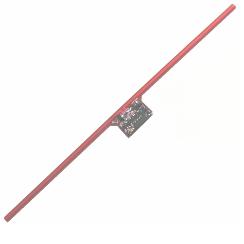 A New York Times feature on sensor-based computing, featuring extensive commentary by UW CSE affiliate professor and Intel Labs Seattle engineer Josh Smith, as well as UW CSE collaborator and UCLA professor Deborah Estrin.
A New York Times feature on sensor-based computing, featuring extensive commentary by UW CSE affiliate professor and Intel Labs Seattle engineer Josh Smith, as well as UW CSE collaborator and UCLA professor Deborah Estrin.
“… technology’s virtuous cycle of smaller, faster and cheaper has reached the point that experts say sensors may soon be powerful enough to be the equivalent of tiny computers. Some ambitious sensor research projects provide a glimpse of where things are headed …
“Microchip-equipped sensors can be designed to monitor and measure not only motion, but also temperature, chemical contamination or biological changes. The applications for sensor-based computing, experts say, include buildings that manage their own energy use, bridges that sense motion and metal fatigue to tell engineers they need repairs, cars that track traffic patterns and report potholes, and fruit and vegetable shipments that tell grocers when they ripen and begin to spoil …
“Power consumption has long been the Achilles’ heel of sensor-based computing … But the power barrier, [Josh] Smith says, is rapidly eroding. Advances in sensor chips are delivering predictable, rapid progress in the amount of data processing that can be done per unit of energy. That, he said, expands the potential data workloads that sensors can handle and the distance over which they can communicate — without batteries.
“At Intel, Mr. Smith is doing sensor research that builds on commercial RFID technology (for remote identification) and adds an accelerometer and a programmable chip — in a package measured in millimeters. Its power, he explains, can come from either a radio-frequency reader, as in RFID, or the ambient radio power from television, FM radio and WiFi networks. (For the latter, Intel is developing ‘power-harvesting circuits,’ he adds.)”
Read the full article here.

